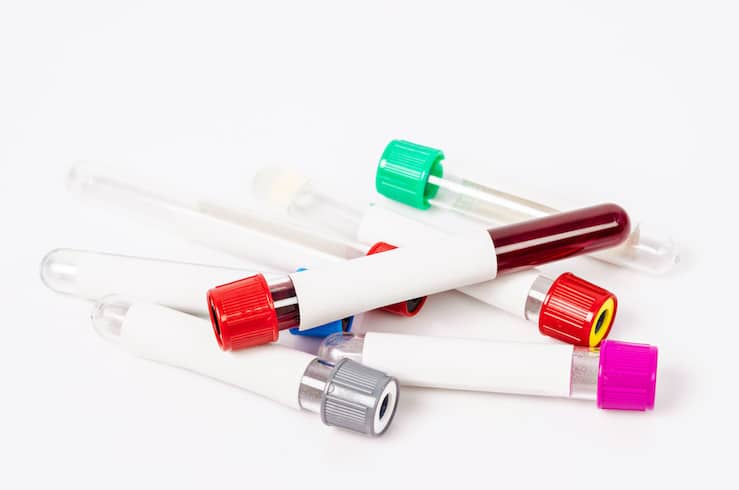Here at BioDesign Wellness Center, we place a great deal of importance on bloodwork. In fact — when it comes to our master plan of care — selecting which blood tests will be administered ranks right up there with your initial appointment and interview with our doctors. That’s because nearly everything we do from a diagnostic standpoint begins with analyzing the results of your bloodwork.
We sometimes use analogies to describe our practices, so with that in mind, we’d like you to think of blood tests as a sort of blueprint. Picture an outdated kitchen undergoing a complete remodel. What’s going to be the homeowner’s first plan of action? Probably hiring a contractor and having some plans drawn up, right?
A thorough blood workup provides us with those blueprints — vital details that we must have in hand in order to:
- Understand what’s happening within key systems in your body
- Get your body fully functional and working better than it ever was before
Another analogy: When it comes to blood tests, we liken the procedure to a farmer working in a field. Think of your blood as the soil for your cells, tissues, and organs. If that soil is missing key nutrients or it’s been exposed to harmful chemicals, the crop will be endangered.
In the same way, we need soil testing to determine the current state of the farmland. We need bloodwork to determine issues within the body that need to be modified or corrected — especially when we’re looking for the underlying cause of chronic conditions.
The Role of Bloodwork in the 6 Steps of Patient Care
Blood work — especially with a new patient — enables us to be objective, with a starting point and a destination. We receive the data we need in order to create a custom plan of care for each individual, with the ability to progress or realign our approach.
This process of determining which blood tests should be administered begins with the first step in BioDesign Wellness Center’s six-point model for the evaluation, diagnosis, and treatment of our patient’s concerns.
The initial doctor/patient interview we mentioned above is the first step (the remaining five steps appear below). The process includes working as a team — you and us — to complete a metabolic survey so we can be assured of having an accurate reading of what organ systems are involved in your reasons for seeing us in the first place.
This helps determine which blood tests should be run. A proper evaluation then follows.
The remaining steps include the following:
- Examination and testing
- Report of our findings
- Crafting a treatment plan
- Continuous monitoring of your progress
- Maintenance care
Not all Bloodwork is the Same
What is it that makes our blood tests different from panels ordered from a more conventional medical practice? First of all, at BioDesign, we go way beyond the standard CBC and metabolic chemistry testing when we begin bloodwork. And once we’ve completed a patient history, we can come to an agreement on the most appropriate panels.
That means we test much more than just Vitamin D. We also want to see levels of C, B, A, K, and E. We want to view hormone levels for a complete picture of the glandular system (endocrine). And we want to examine the thyroid, sex hormones, cortisol, hormones that regulate blood sugar, anti-aging hormones, and fluid retention hormones.
We’re also looking for markers for both systemic and cardiovascular inflammation / C-Reactive Protein (CRP), ESR, Homocysteine, and Glutathione. And we’re checking the status of minerals and electrolytes in the blood, which might include iron, selenium, magnesium, potassium, iodine, and calcium.
Compare this to the typical lab blood panel, where only potassium and calcium are checked. When a full panel is run, we are more likely to find additional deficiencies in one or more of these nutrients.
Additional Testing Contributes to the Knowledge Base
At BioDesign Wellness Center, our patients can rest assured that our comprehensive panels will address their specific concerns in a manner that is seldom pursued by practitioners within the conventional health system. And once those initial blood tests are run, we examine those results to see if there’s a need for a second level of testing.
Often, patients who complain of a chronic health issue might actually be suffering from a chronic infection that might show up in a subsequent test. That advanced level might reveal mold, Epstein–Barr virus, gut infections, parasites, H-pylori, or even tick-borne illnesses like Lyme disease.
These subsequent tests may include urine, stool, or more blood tests. Again, these are not the typical tests that have already been run prior in another medical office. These tests go to a higher degree of specificity, often testing at the DNA level for the offending invader.
How differently we view and interpret the results will be discussed in a future blog post. But know this. At BioDesign Wellness, what is important to know right away is that there are lab ranges, and then there are functional lab ranges.
- Lab ranges are determined based on the average person.
- Functional lab ranges are determined based on the average healthy person — and additionally, they are matched to that person’s specific physical health presentation.
The common conventional practice calls for scanning a blood test result and only addressing the red-flagged items. What we do instead is dig deep into the lab work to find the nuances that are often causing your symptoms and driving your body into a state of health that’s never good for you or your loved ones.


